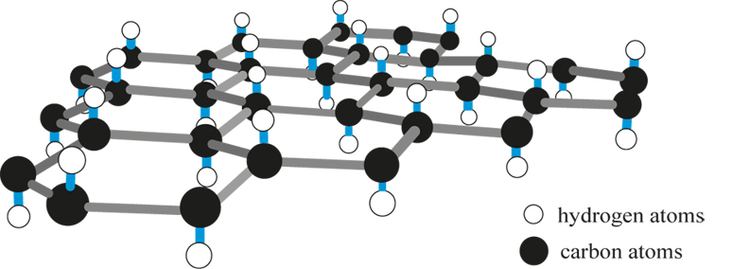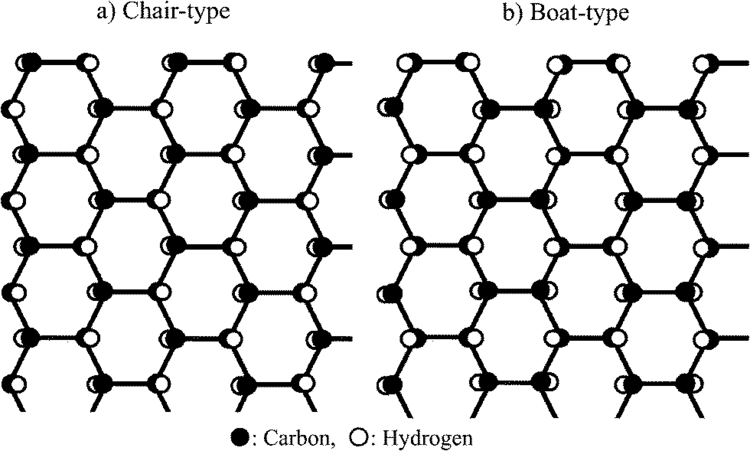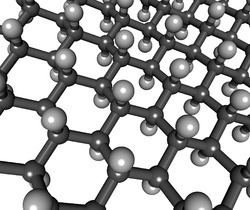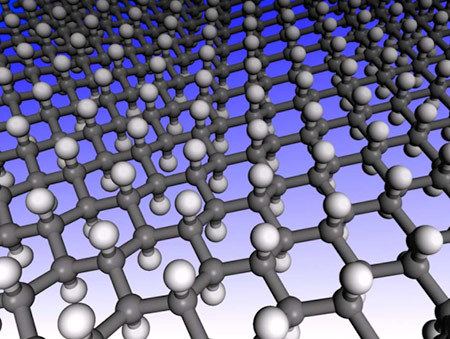Formula (CH)n | ||
 | ||
Graphane graphene science nano technology demonstration
Graphane is a two-dimensional polymer of carbon and hydrogen with the formula unit (CH)n where n is large. Graphane should not be confused with graphene, a two-dimensional form of carbon alone. Graphane is a form of hydrogenated graphene. Graphane's carbon bonds are in sp3 configuration, as opposed to graphene's sp2 bond configuration, thus graphane is a two-dimensional analog of cubic diamond.
Contents
- Graphane graphene science nano technology demonstration
- Graphane island in graphene at 300k
- Structure
- Variants
- Potential applications
- References

Graphane island in graphene at 300k
Structure

The structure was found, using a cluster expansion method, as the most stable of all the possible hydrogenations ratios of graphene in 2003. In 2007, researchers found that the compound is more stable than other compounds containing carbon and hydrogen, such as benzene, cyclohexane and polyethylene. This group named the predicted compound graphane, because it is the fully saturated version of graphene. The compound is an insulator. Chemical functionalization of graphene with hydrogen may be a suitable method to open a band gap in graphene.
P-doped graphane is proposed to be a high-temperature BCS theory superconductor with a Tc above 90 K.
Any disorder in hydrogenation conformation tends to contract the lattice constant by about 2.0%.
Variants

Partial hydrogenation leads to hydrogenated graphene rather than (fully hydrogenated) graphane. Such compounds are usually named as "graphane-like" structures. Graphane and graphane-like structures can be formed by electrolytic hydrogenation of graphene or few-layer graphene or high-oriented pyrolytic graphite. In the last case mechanical exfoliation of hydrogenated top layers can be used.

Hydrogenation of graphene on substrate affects only one side, preserving hexagonal symmetry. One-sided hydrogenation of graphene is possible due to the existence of ripplings. Because the latter are distributed randomly, the obtained material is disordered in contrast to two-sided graphane. Annealing allows the hydrogen to disperse, reverting to graphene. Simulations revealed the underlying kinetic mechanism.
Density functional theory calculations suggested that hydrogenated and fluorinated forms of other group IV (Si, Ge and Sn) nanosheets present properties similar to graphane.
Potential applications
This compound has been proposed for hydrogen storage. Hydrogenation decreases the dependence of the lattice constant on temperature, which indicates a possible application in precision instruments.
